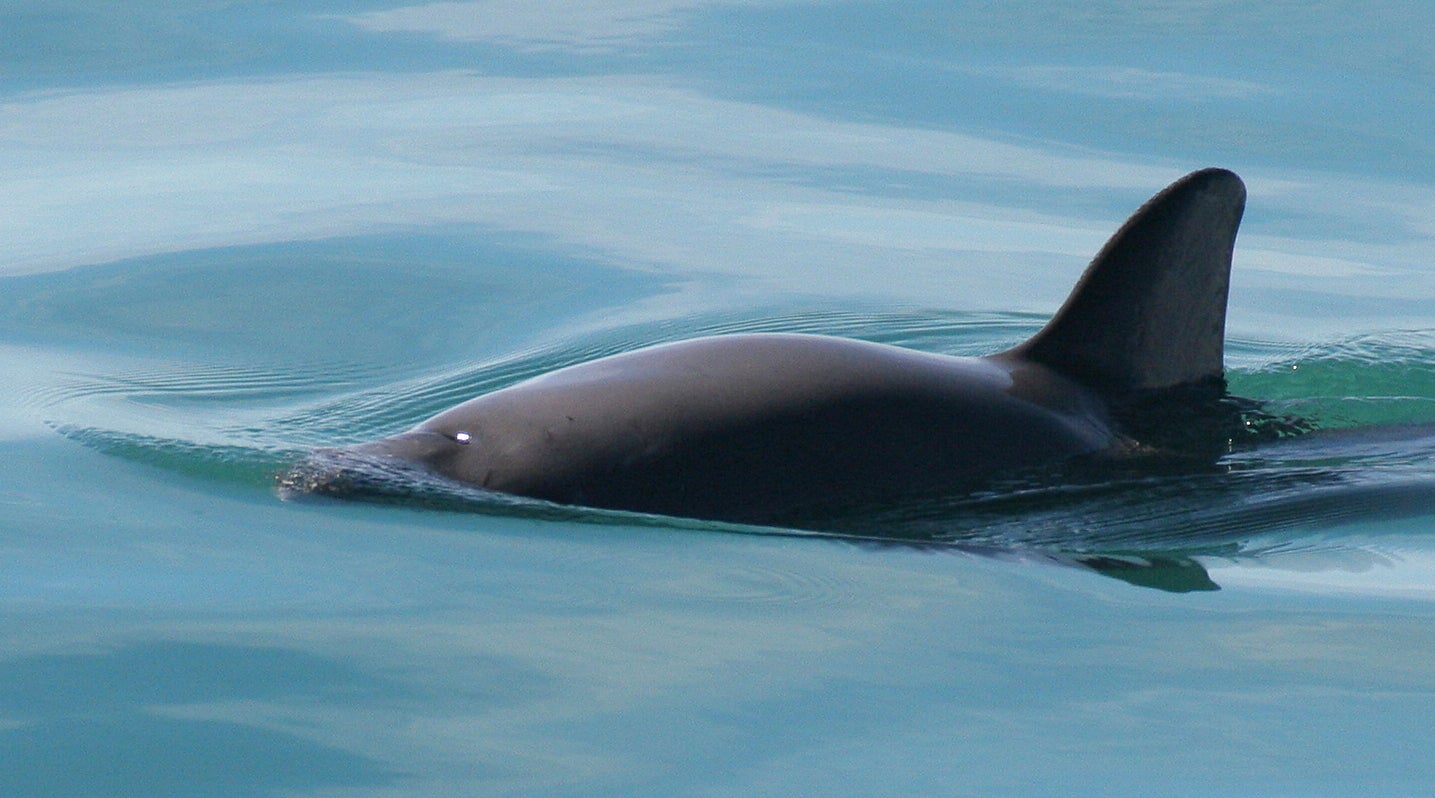Mexican Navy hopes to expand net-snagging hooks to protect endangered vaquita porpoises
Mexico’s Navy says it is planning to expand the area where it sinks concrete blocks topped with metal hooks to snag gill nets that trap vaquita marina porpoises

Your support helps us to tell the story
From reproductive rights to climate change to Big Tech, The Independent is on the ground when the story is developing. Whether it's investigating the financials of Elon Musk's pro-Trump PAC or producing our latest documentary, 'The A Word', which shines a light on the American women fighting for reproductive rights, we know how important it is to parse out the facts from the messaging.
At such a critical moment in US history, we need reporters on the ground. Your donation allows us to keep sending journalists to speak to both sides of the story.
The Independent is trusted by Americans across the entire political spectrum. And unlike many other quality news outlets, we choose not to lock Americans out of our reporting and analysis with paywalls. We believe quality journalism should be available to everyone, paid for by those who can afford it.
Your support makes all the difference.Mexico’s Navy said Wednesday it is planning to expand the area where it sinks concrete blocks topped with metal hooks to snag gill nets that are killing vaquita marina porpoises.
The Navy began dropping the blocks into the Gulf of California last year, in hopes it may help save the world’s most endangered marine mammal.
The vaquita lives only in the Gulf, also known as the Sea of Cortez, where as few as ten vaquitas remain. They cannot be held or bred in captivity.
The vaquitas are caught and drown in illegal gill nets set for totoaba, a Gulf fish whose swim bladder is considered a prized delicacy in China, worth thousands of dollars per pound. That is where the concrete blocks come in; the hooks catch on the expensive totoaba nets, ruining them.
That should supposedly discourage illicit fishermen from risking their expensive gear in the “zero tolerance area,” a rough quadrangle considered the last holdout for the vaquitas. It’s called that because that’s where the blocks are sunk, and where patrols are heaviest, and there is supposed to be no fishing at all, though it still sometimes occurs.
But a strange thing happened when scientists and researchers set out on the most recent sighting expedition to look for vaquitas in May.
They found that most of the 16 sightings (some may be repeat sightings of the same animal) occurred on the very edges, and in a few cases just outside, of the “zero tolerance” area that was supposed to be the most welcoming place for the animals.
That lead to the Navy announcement Wednesday that it will negotiate with the fishing community of San Felipe, in Baja California state to start sinking blocks outside the zero tolerance zone.
“Once a consensus with the fishing community has been reached, 152 more blocks will be placed in the freezone alongside the zero tolerance area, where there have been visual or echolocation sightings” of vaquitas, said Real Admiral Marco Peyrot Solís, the Navy commander of the region.
The fishermen of San Felipe say the government has not lived up to previous promises of compensatory payments for lost income due to net bans in the area. They also say the government has done little to provide better, more environmentally sensitive fishing gear.
Experts estimate the most recent sightings suggest 10 to 13 vaquitas remain, a similar number to those seen in the last such expedition in 2021.
—-
Follow AP’s climate coverage at: https://apnews.com/hub/climate-and-environment